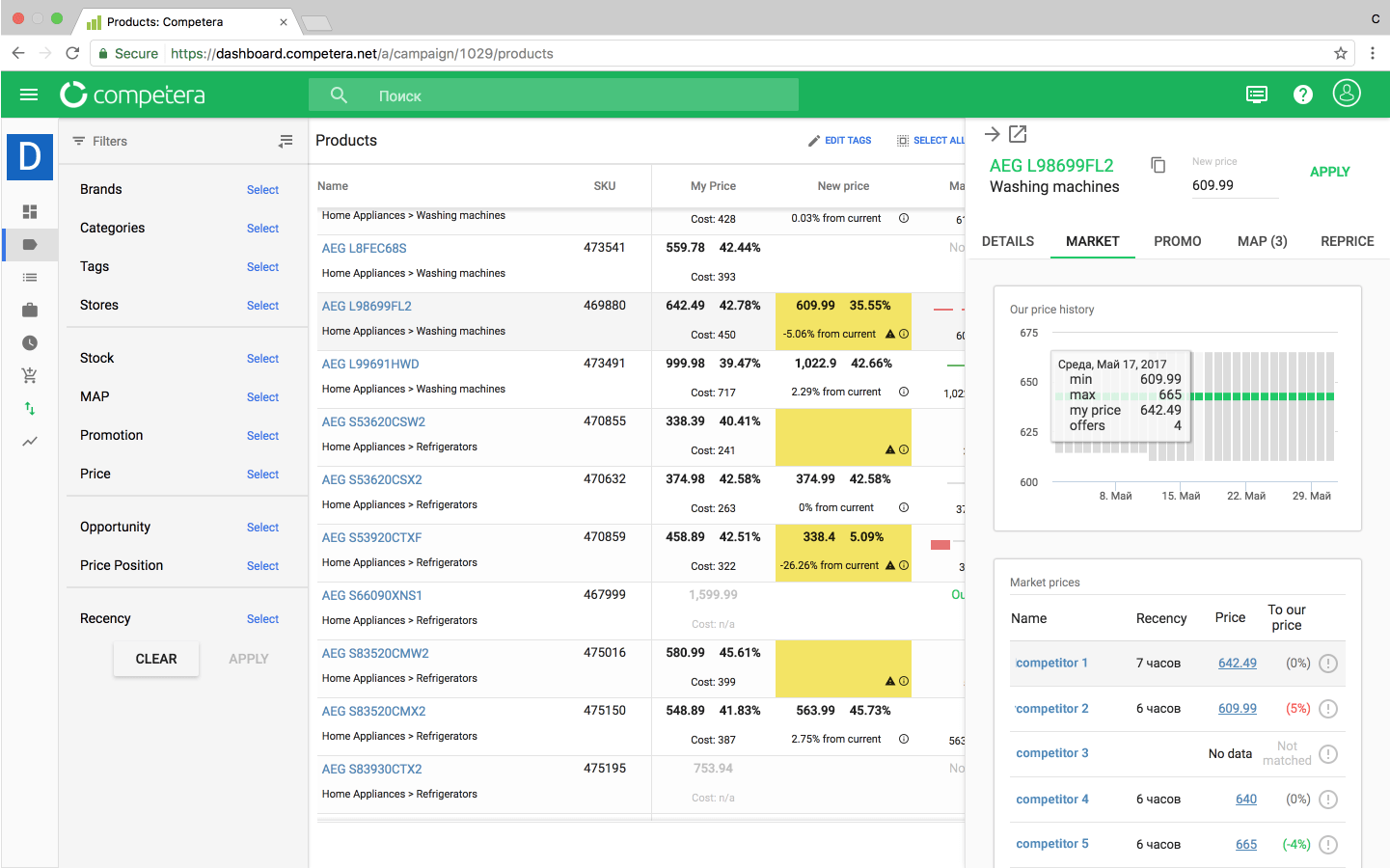
Competera: Complete Buyer's Guide
AI-driven pricing optimization platform
Competera is an AI-driven pricing optimization platform designed specifically for enterprise retailers managing complex product portfolios across multiple channels. The company's contextual AI technology analyzes over 20 pricing and non-pricing factors to generate SKU-level price recommendations[48][49], positioning itself as a sophisticated alternative to rule-based pricing systems.
Market Position & Maturity
Market Standing
Competera operates in the rapidly expanding AI-powered pricing optimization market, which is forecast to grow from $1.5 billion in 2024 to $7.2 billion by 2033[11].
Company Maturity
The platform's customer base primarily consists of enterprise retailers managing complex pricing portfolios, including Union Coop, Rukavychka, and other large-scale operations[50][54].
Longevity Assessment
The vendor's long-term viability appears supported by the growing demand for AI-powered pricing solutions and documented customer success stories.
Proof of Capabilities
Customer Evidence
Union Coop achieved 6% margin loss prevention and 95% accuracy in real-time repricing after platform implementation[48][52]. Rukavychka realized 7% gross profit growth within 8 weeks by resolving cross-elasticity challenges through Competera's AI-driven approach[54].
Quantified Outcomes
Competera demonstrates proven capabilities through documented customer implementations and measurable business outcomes across multiple industries.
Case Study Analysis
A luxury cruise retailer reported 30% increase in daily profit per passenger and 80% reduction in pricing workload through AI-driven demand-based pricing[50].
Market Validation
Market validation extends beyond individual customer success to broader adoption patterns.
Reference Customers
The platform's customer base primarily consists of enterprise retailers managing complex pricing portfolios, including Union Coop, Rukavychka, and other large-scale operations[50][54].
AI Technology
Competera's AI architecture incorporates several advanced capabilities that differentiate it from rule-based pricing competitors. The platform's cross-elasticity modeling links substitute and complementary products[49], while context-dependent price elasticity algorithms account for seasonality and competitive positioning[49].
Architecture
The platform's technical architecture supports enterprise-scale deployments with the ability to process pricing decisions across thousands of SKUs simultaneously.
Primary Competitors
Enterprise competitors include PROS and Wiser, which offer comprehensive ML-powered platforms with similar documented margin improvements.
Competitive Advantages
Competera's ability to process 20+ variables simultaneously and provide sub-minute price updates positions it favorably against legacy pricing solutions[48][49].
Market Positioning
Competera competes within the AI-powered pricing optimization market against both established enterprise players and emerging ecommerce-native solutions.
Win/Loss Scenarios
Win scenarios favor Competera when organizations require sophisticated cross-elasticity analysis, real-time competitive response, and omnichannel price synchronization[46][49][54]. Loss scenarios typically occur when budget constraints limit investment to under $50K annually[45][56].
Key Features

Pros & Cons
Use Cases
Integrations
Pricing
Featured In Articles
Comprehensive analysis of Price Testing for Ecommerce for Ecommerce businesses and online retailers. Expert evaluation of features, pricing, and implementation.
How We Researched This Guide
About This Guide: This comprehensive analysis is based on extensive competitive intelligence and real-world implementation data from leading AI vendors. StayModern updates this guide quarterly to reflect market developments and vendor performance changes.
57+ verified sources per analysis including official documentation, customer reviews, analyst reports, and industry publications.
- • Vendor documentation & whitepapers
- • Customer testimonials & case studies
- • Third-party analyst assessments
- • Industry benchmarking reports
Standardized assessment framework across 8 key dimensions for objective comparison.
- • Technology capabilities & architecture
- • Market position & customer evidence
- • Implementation experience & support
- • Pricing value & competitive position
Research is refreshed every 90 days to capture market changes and new vendor capabilities.
- • New product releases & features
- • Market positioning changes
- • Customer feedback integration
- • Competitive landscape shifts
Every claim is source-linked with direct citations to original materials for verification.
- • Clickable citation links
- • Original source attribution
- • Date stamps for currency
- • Quality score validation
Analysis follows systematic research protocols with consistent evaluation frameworks.
- • Standardized assessment criteria
- • Multi-source verification process
- • Consistent evaluation methodology
- • Quality assurance protocols
Buyer-focused analysis with transparent methodology and factual accuracy commitment.
- • Objective comparative analysis
- • Transparent research methodology
- • Factual accuracy commitment
- • Continuous quality improvement
Quality Commitment: If you find any inaccuracies in our analysis on this page, please contact us at research@staymodern.ai. We're committed to maintaining the highest standards of research integrity and will investigate and correct any issues promptly.